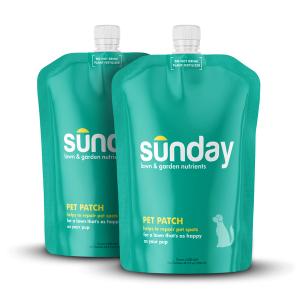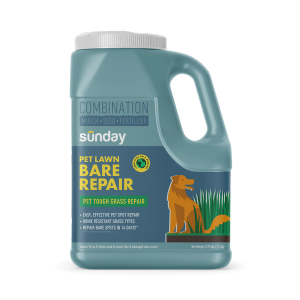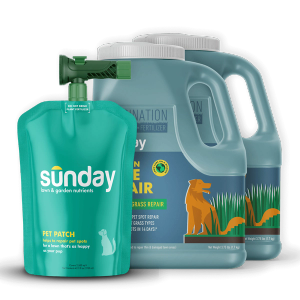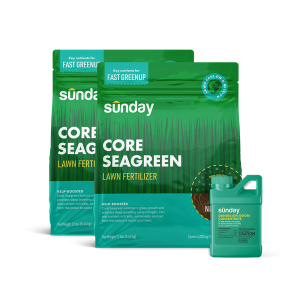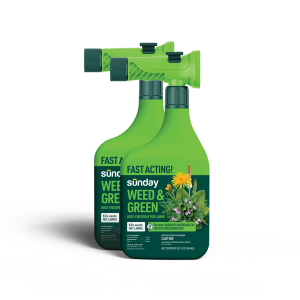How to spot heat and drought stress
When your grass is stressed, footprints that would normally spring back up stay down and limp for longer than 30 minutes. As stress worsens, your grass tips will brown. At its worst, browning tips progress to brown patches across your lawn.
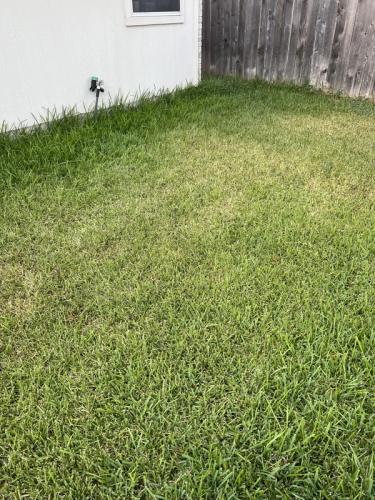
5 ways to help your lawn handle heat stress and drought
Time your watering
Water your lawn between 6am and 10am. Any later and the water will evaporate before it gets absorbed by the soil or reaches the roots.
Water the right amount
Water deep, always. Your lawn should get at least one inch of water per week. And, be sure to water two or three times a week. To find out how long it takes for your lawn to get about an inch of water, check out our lawn watering basics post.
Set your mower blades high
Set your mower blades on the highest level for your grass. Taller grass grows deeper roots and deeper roots access more water and nutrients for a stronger, more resilient lawn that can bounce back from heat stress.
Similarly, never mow more than ⅓ of your grass height at the same time. Grass blades are responsible for producing food to meet plant needs. When too much of the blade length is cut, it is forced to draw on reserve energy stores stressing grass, stunting growth, and starving the plant.
And make sure your mower blades are sharp because dull blades rip into grass tissue and cause more stress.
Reduce lawn use
If you have areas of your lawn that are struggling, try to minimize foot traffic in those spots while your grass recovers.
Rethink fertilizing
Your lawn needs nutrients to survive. Before you reach for the fertilizer, though, think again; grass needs to take in a lot of energy to grow, and growing grass mid-summer could definitely stress your lawn out way more than it can handle.
Drought and lawn dormancy
If not tended to, your lawn might try and defend itself against drought and heat stress by going into what is called a “dormant state." The best things to do when this happens is to keep your lawn watered and stay off the grass as much as possible while it recovers. It's similar to what you'd do if you got a slip and slide burn.
Prevent heat stress in your lawn
- Fertilize early. Feeding your lawn the right nutrients earlier in the season will help your grass strengthen, thicken, and build resiliency to stressors like heat and drought.
- Seed drought-resistant grasses. If you have cool season grass, you can help your lawn withstand heat stress by overseeding your lawn with a more drought-resistant grass variety in the fall. For warm-season, fill in patches and thinning areas of your lawn with plugs in early summer ahead of heat!
- Use preventative lawn treatments. To reduce dry patches and grass wilting, apply Lawn Aid heat stress prevention early. For retaining moisture and reducing the impacts of drought, apply Drought Defense, our newest advanced surfactant technology.
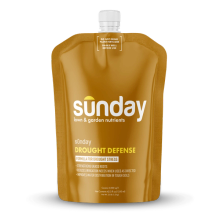
Drought Defense Lawn Treatment
- 0-0-1 NPK liquid lawn treatment
- Enhances drought resiliency
- Repairs summer lawn damage
- Covers up to 2,500 sq. ft.
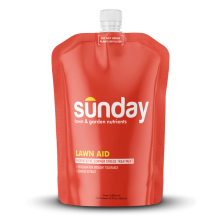
Lawn Aid Heat Stress Prevention Treatment
- 0-0-3 NPK liquid lawn treatment
- Improves lawn resilience to summer heat
- Reduces grass wilting and dry lawns
- Covers up to 3,000 sq. ft.







